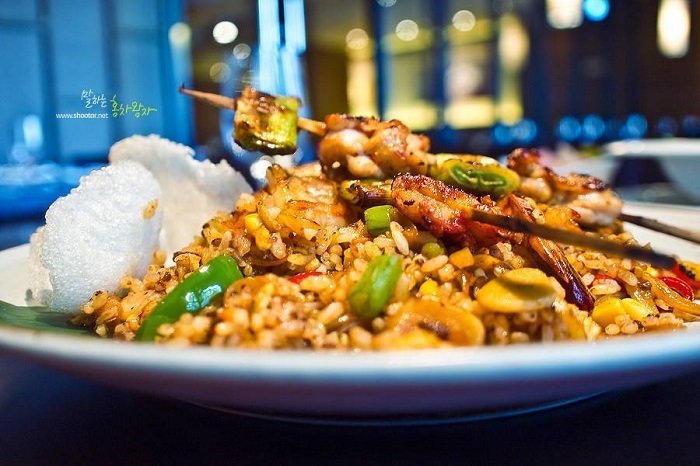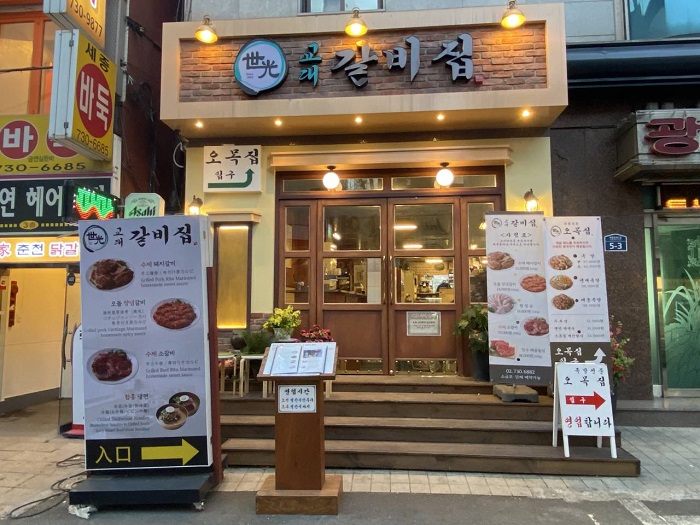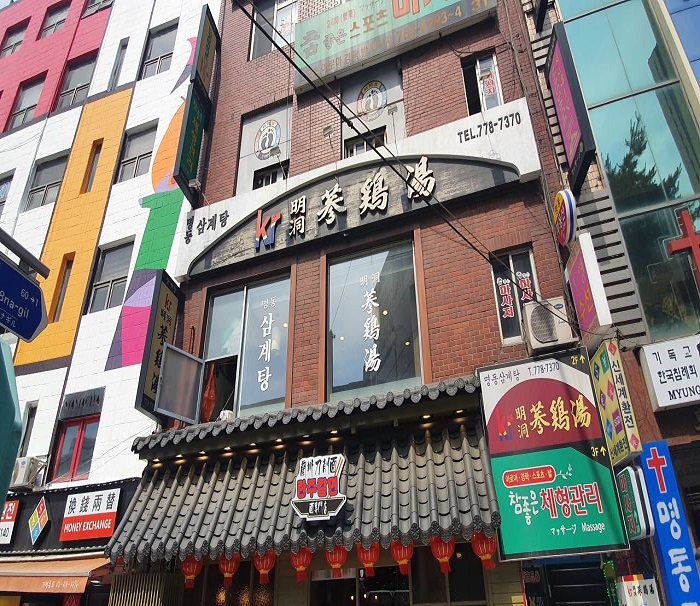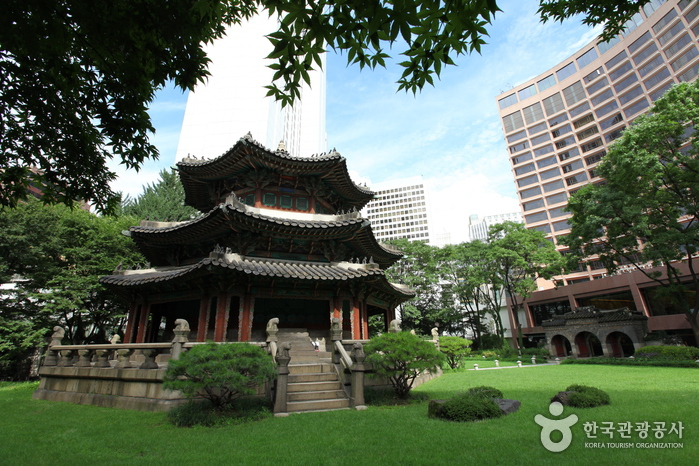ITALASIAN (이딸라시안)
8.5Km 2021-08-09
91, Saemunan-ro, Jongno-gu, Seoul
+82-2-733-2272
It is a restaurant known for its large servings. This restaurant's signature menu is spaghetti. This Korean dishes restaurant is located in Jongno-gu, Seoul.
Homeplus Express - Gwanghwamun Branch [Tax Refund Shop] (홈플러스익스프레스 광화문)
8.5Km 2024-04-18
91, Saemunan-ro, Jongno-gu, Seoul
-
Davich Optical - Myeongdong Branch [Tax Refund Shop] (다비치안경 명동점)
8.5Km 2024-06-27
62, Sogong-ro, Jung-gu, Seoul
-
CU - Koreana Hotel Branch [Tax Refund Shop] (cu코리아나호텔점)
8.5Km 2024-06-26
135, Sejong-daero, Jung-gu, Seoul
-
Nike - JH Town Branch [Tax Refund Shop] (나이키 제이에이치타운)
8.5Km 2024-04-16
163, Itaewon-ro, Yongsan-gu, Seoul
-
Gyodae Galbijip Sejong Center for the Performing Arts(교대갈비집 세종문화회관)
8.5Km 2020-11-20
5-3 Saemunan-ro 5-gil Jongno-gu Seoul
+82-2-730-6882
A great place for group dinners and gatherings. This BBQ restaurant is located in Jongno-gu, Seoul. The representative menu is grilled spareribs.
kr Myeongdong Samgyetang (kr명동삼계탕)
8.5Km 2021-05-12
49, Myeongdong, 8na-gil, Jung-gu, Seoul
+82-2-778-7370
It makes Samgyetang (Korean ginseng chicken soup) using herbal broth as a store with more than 20 years’ experience. This restaurant's signature menu is ginseng chicken soup. This Korean dishes is located in Jung-gu, Seoul.
Seoul Metropolitan Library (서울도서관)
8.5Km 2022-12-14
110, Sejong-daero, Jung-gu, Seoul
+82-2-2133-0300
Seoul Library provides access to a wide range of documents and materials about Seoul Metropolitan City. Visitors will find diverse resources related to the city including history, culture, urban planning, transportation, environmental issues, administration, reports on outbound visitors, research documents, video clips, and e-data.
Red Container - Itaewon Branch (No. 2) [Tax Refund Shop] (레드컨테이너 이태원2호)
8.5Km 2024-01-22
1F, 2F, 165-1, Itaewon-ro, Yongsan-gu, Seoul
-
Hwangudan Altar (환구단)
8.5Km 2020-05-07
112, Sogong-ro, Jung-gu, Seoul
+82-2-3396-5842
Hwangudan Altar, also called Hwandan Altar, refers to an altar complex for the rite of heaven. The rites were first performed in the Goryeo dynasty by King Seongjong in the first month of 983 (2nd year of his reign), but was repeatedly adopted and abolished, and eventually stopped at the start of the Joseon dynasty.
Then in 1456 (2nd year of King Sejo), the practice was temporarily standardized and the rites were performed at Hwangudan Altar again in 1457. However, rites were again abolished in 1464 (10th year of King Sejo). It wasn’t until 1897 (34th year of King Gojong) when the Joseon dynasty was renamed as the Korean Empire and King Gojong ascended to emperor, that the rite was revived.
Now, Hwangungu Shrine and three stone drums stand at the location of the former altar complex. The three stone drums symbolize the instruments used for the rites. The shrine was completed in 1899, two years after the altar was started in 1897. Today, the Hwangungu Shrine still stands within the hotel grounds of the Westin Chosun Hotel.


![Davich Optical - Myeongdong Branch [Tax Refund Shop] (다비치안경 명동점)](http://tong.visitkorea.or.kr/cms/resource/98/2878598_image2_1.jpg)
![Nike - JH Town Branch [Tax Refund Shop] (나이키 제이에이치타운)](http://tong.visitkorea.or.kr/cms/resource/48/2878448_image2_1.jpg)


![Red Container - Itaewon Branch (No. 2) [Tax Refund Shop] (레드컨테이너 이태원2호)](http://tong.visitkorea.or.kr/cms/resource/52/2878452_image2_1.jpg)

 English
English
 한국어
한국어 日本語
日本語 中文(简体)
中文(简体) Deutsch
Deutsch Français
Français Español
Español Русский
Русский